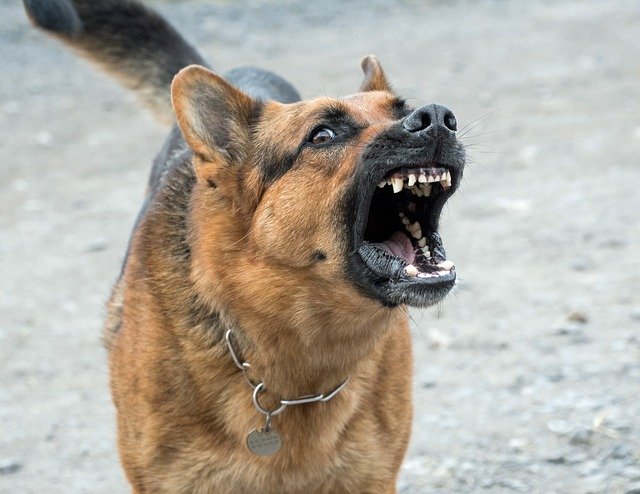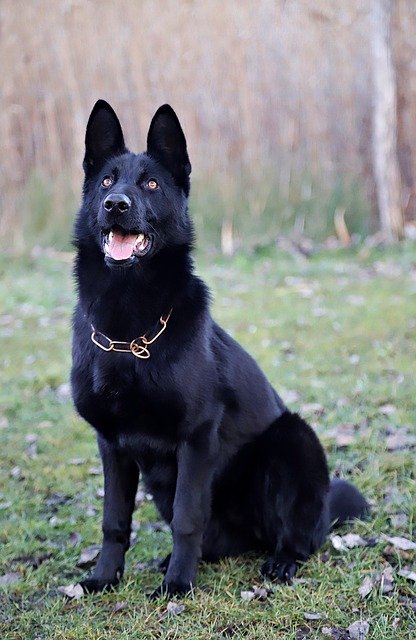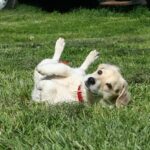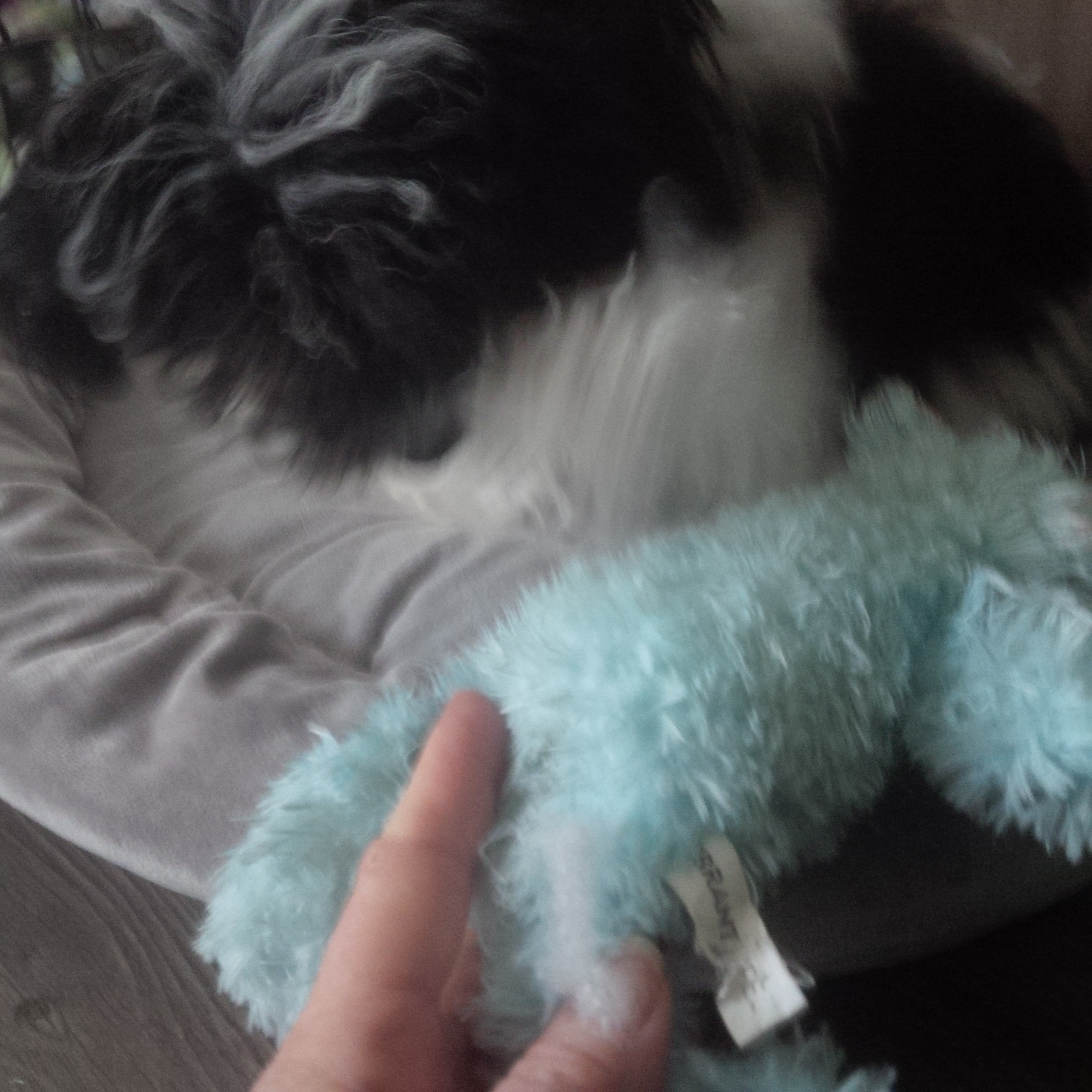 HE’S JUST BEING A PUPPY! STAGES OF LIFE
HE’S JUST BEING A PUPPY! STAGES OF LIFE
As humans, we think of children in terms of babies, toddlers, and teenagers/adolescents.
Canines also have stages of growth and maturity recognized in terms that are identifiable by physical and behavioral changes.
NEONATAL STAGE
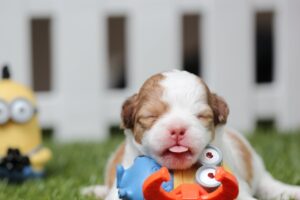 The Neonatal stage is the first stage when the puppy is born until two (0-2)weeks old. Only the sense of taste and touch has developed and the puppy completely relies upon his mother.
The Neonatal stage is the first stage when the puppy is born until two (0-2)weeks old. Only the sense of taste and touch has developed and the puppy completely relies upon his mother.
The puppy’s eyes are not open yet, and he can only crawl to snuggle into his canine mom for nursing.
TRANSITIONAL STAGE
 The puppy is in the transitional stage between two (2) weeks and four (4) weeks of age. Most pet parents will never see their soon-to-be new puppy in this early stage, but this is when the puppy can stand, walk a bit, wag its tail, and bark.
The puppy is in the transitional stage between two (2) weeks and four (4) weeks of age. Most pet parents will never see their soon-to-be new puppy in this early stage, but this is when the puppy can stand, walk a bit, wag its tail, and bark.
At this stage, the puppy’s senses are fully developed. He has learned to play with his littermates and has been corrected and given positive reinforcement by his canine mom.
SOCIALIZATION STAGE
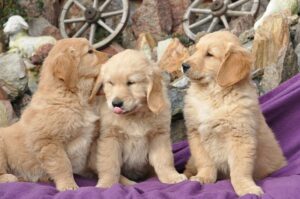 The most vital stage of a puppy’s development is the socialization stage, which is when most humans become pet parents. The Socialization stage occurs at around three (3) weeks old until the puppy is approximately twelve to sixteen (12-16) weeks old. Breed, size, breeder environment, and other factors play a part. Puppies commonly go to their new home at ages seven to twelve (7-12) weeks old.
The most vital stage of a puppy’s development is the socialization stage, which is when most humans become pet parents. The Socialization stage occurs at around three (3) weeks old until the puppy is approximately twelve to sixteen (12-16) weeks old. Breed, size, breeder environment, and other factors play a part. Puppies commonly go to their new home at ages seven to twelve (7-12) weeks old.
 Puppies raised in an outdoor kennel don’t benefit from daily indoor living and will need extra socialization and acclimation to add to their puppy training. These unsocialized pups will likely be shy and fearful of people, other animals, noise, and sudden movements. If early socialization is not part of your puppy’s rearing, fear can lead to fear aggression.
Puppies raised in an outdoor kennel don’t benefit from daily indoor living and will need extra socialization and acclimation to add to their puppy training. These unsocialized pups will likely be shy and fearful of people, other animals, noise, and sudden movements. If early socialization is not part of your puppy’s rearing, fear can lead to fear aggression.
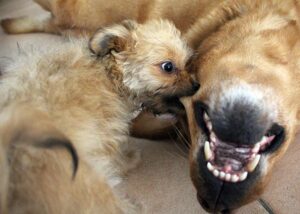 If you have another dog at home, it’s important to introduce them outside your home, not where the older dog will be territorial. Don’t expect them to be BFFs immediately. Developing their rank with each other and the family as a pack takes time and patience.
If you have another dog at home, it’s important to introduce them outside your home, not where the older dog will be territorial. Don’t expect them to be BFFs immediately. Developing their rank with each other and the family as a pack takes time and patience.
As long as neither the puppy nor the older dog is in danger, they will work it out between them with no need for intervention. Read TWO DOGS ARE BETTER THAN ONE.
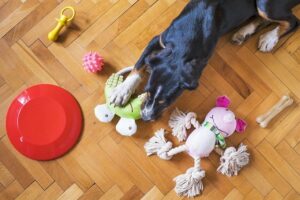 This is also when it’s important NOT to spend twenty-four (24) hours a day with your puppy. If you never allow your puppy to have time by himself, you will be creating separation anxiety. Additionally, you will become frustrated and maybe even resentful if you don’t have time alone. Read HOME ALONE-SEPARATION ANXIETY.
This is also when it’s important NOT to spend twenty-four (24) hours a day with your puppy. If you never allow your puppy to have time by himself, you will be creating separation anxiety. Additionally, you will become frustrated and maybe even resentful if you don’t have time alone. Read HOME ALONE-SEPARATION ANXIETY.
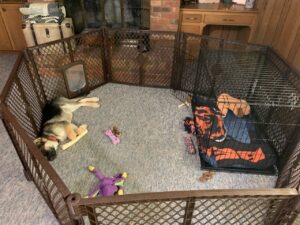 At this early stage of your puppy’s life, housetraining should begin with puppy-proofing your home. When interacting with your puppy, there are many dos and don’ts that will make him more social and easily handled. Proper interplay and evoking a positive influence at a young age will help your puppy avoid developing negative and aggressive behavior like guarding resources. Read WELCOME HOME PUPPY Read PUPPY PROOFING Read GUARDING RESOURCES
At this early stage of your puppy’s life, housetraining should begin with puppy-proofing your home. When interacting with your puppy, there are many dos and don’ts that will make him more social and easily handled. Proper interplay and evoking a positive influence at a young age will help your puppy avoid developing negative and aggressive behavior like guarding resources. Read WELCOME HOME PUPPY Read PUPPY PROOFING Read GUARDING RESOURCES
RANKING
This stage, which is between three and six (3-6) months of age, is oh-so-familiar to pet parents when we talk about what their puppy is up to, yet it’s still a surprise to most that these new behaviors are normal puppy stuff! I’m talking about when that adorable follow-you-everywhere puppy will decide to wander off, growl, and talk back, or declare war on another dog in the household. Sometimes, you may catch the puppy flexing his muscles by trying to put his front paws on the other dog’s back, if possible, or standing on the other dog when that dog is lying down. All of this Ranking stage behavior is about dominance and submission and the puppy taking his place in the pack. The Ranking Stage will include the following major events.
Teething
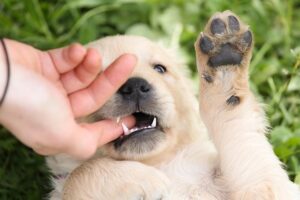 When your puppy comes home, he will have all or most of his twenty-eight (28) baby teeth. He will also have discovered the act of playful biting when playing with his littermates.
When your puppy comes home, he will have all or most of his twenty-eight (28) baby teeth. He will also have discovered the act of playful biting when playing with his littermates.
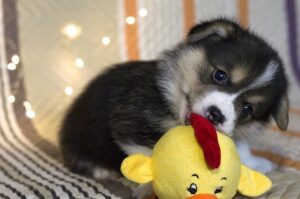 True teething begins at approximately three to four (3-4) months of age until approximately seven to eight (7-8) months. To be clear, teething will occur during the Ranking stage and may continue into the Adolescent stage. My experience has been that small, toy breeds hang on to their baby teeth, especially the canine teeth, longer than my large breed dogs.
True teething begins at approximately three to four (3-4) months of age until approximately seven to eight (7-8) months. To be clear, teething will occur during the Ranking stage and may continue into the Adolescent stage. My experience has been that small, toy breeds hang on to their baby teeth, especially the canine teeth, longer than my large breed dogs.
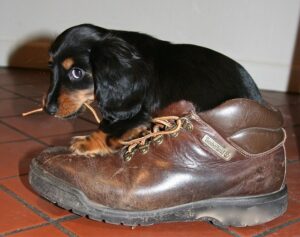 Appropriate methods of teaching your puppy what is OK to bite or chew on and what is not OK should be initiated sooner rather than later. When your puppy bites your fingers, it may seem cute at first, but believe me, it will not be cute in a few days. If you allow your puppy to bite you or chew on your clothing, shoes, or other household items, then you are telling him that it’s perfectly acceptable behavior, and he will continue to do so. The cuteness of nibbling your fingers will be short-lived, and if you have children in your home, you will create a dangerous situation.
Appropriate methods of teaching your puppy what is OK to bite or chew on and what is not OK should be initiated sooner rather than later. When your puppy bites your fingers, it may seem cute at first, but believe me, it will not be cute in a few days. If you allow your puppy to bite you or chew on your clothing, shoes, or other household items, then you are telling him that it’s perfectly acceptable behavior, and he will continue to do so. The cuteness of nibbling your fingers will be short-lived, and if you have children in your home, you will create a dangerous situation.
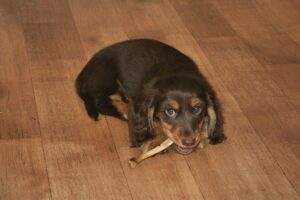 One simple method would be to tell him “NO” in a loud, dominant voice. The second he stops, offer him a chew toy as an alternative and tell him in a loving, soft voice that he is a “GOOD BOY.” Saying “NO” in a loud, assertive voice mimics the response he would get from a littermate when puppies “yelp” because they are bitten during playtime.
One simple method would be to tell him “NO” in a loud, dominant voice. The second he stops, offer him a chew toy as an alternative and tell him in a loving, soft voice that he is a “GOOD BOY.” Saying “NO” in a loud, assertive voice mimics the response he would get from a littermate when puppies “yelp” because they are bitten during playtime.
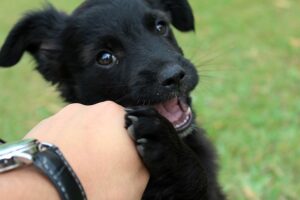 There are also bitter-tasting deterrents readily available that work rather well. These bitter solutions can be used on furniture, clothing, shoes, or your hands to discourage and help train your puppy that biting and destructive behaviors are unacceptable. Never spray these products directly into your dog’s mouth or near his face. The taste of bitter or sour sprays on objects or your fingers is much more effective than the smell.
There are also bitter-tasting deterrents readily available that work rather well. These bitter solutions can be used on furniture, clothing, shoes, or your hands to discourage and help train your puppy that biting and destructive behaviors are unacceptable. Never spray these products directly into your dog’s mouth or near his face. The taste of bitter or sour sprays on objects or your fingers is much more effective than the smell.
Zoomies/FRAPs
Another behavior you may encounter during the Ranking Stage and into the Adolescence Stage is known as FRAPs, which stands for Frenetic Random Activity Periods. Pet parents refer to FRAPS as the Zoomies, the Crazies, or Circling. This can occur at any age, but because it’s the result of pent-up energy, it usually occurs with puppies or young dogs. Puppies that are crated excessively or don’t get enough exercise may be more prone to exhibit the Zoomies.
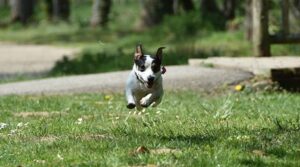
Not to worry. Zoomies are normal and should be allowed to take their course as long as the puppy is safe, as is everyone else in the household.
ADOLESCENCE STAGE
 When a pet parent tells me that their puppy is going through the “terrible twos,” I don’t think they are consoled to know that it’s identified as puppy Adolescence. The Adolescence stage is usually between six and eighteen (6-18) months, depending on breed and size. Small and toy breeds usually mature faster. Large and giant breeds may maintain a few puppy-like behaviors until they are two (2) years old.
When a pet parent tells me that their puppy is going through the “terrible twos,” I don’t think they are consoled to know that it’s identified as puppy Adolescence. The Adolescence stage is usually between six and eighteen (6-18) months, depending on breed and size. Small and toy breeds usually mature faster. Large and giant breeds may maintain a few puppy-like behaviors until they are two (2) years old.
My best advice is to ensure that your puppy receives consistent guidance, socialization, and training starting at a young age. Behaviors like dominance, destruction, displays of aggression, guarding resources, reverting to defecating or urinating indoors, or selective hearing, meaning not listening to commands like come-when-called, may be averted with appropriate training beginning as early as eight (8) weeks old.
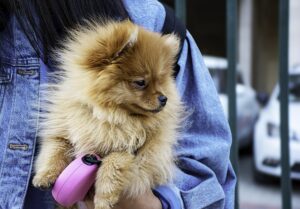 It’s essential to be the leader and not treat your puppy as though you are his littermate. You cannot be equal; only one can be in control. If you allow your puppy to engage in harmful, inappropriate, and unwanted behaviors, you send a message that it’s acceptable. Pet parents often create behaviors that quickly backfire and become issues that must be corrected. Here’s an example. If a toy breed puppy barks and snaps at someone, a pet parent may pick up the puppy and cuddle it to prevent the annoying and possibly embarrassing incident. The pet parent rewarded the puppy for its unfavorable behavior by snuggling and petting it. Most likely, this act of affection and attention was accompanied by “it’s ok” and other words of encouragement and acceptance.
It’s essential to be the leader and not treat your puppy as though you are his littermate. You cannot be equal; only one can be in control. If you allow your puppy to engage in harmful, inappropriate, and unwanted behaviors, you send a message that it’s acceptable. Pet parents often create behaviors that quickly backfire and become issues that must be corrected. Here’s an example. If a toy breed puppy barks and snaps at someone, a pet parent may pick up the puppy and cuddle it to prevent the annoying and possibly embarrassing incident. The pet parent rewarded the puppy for its unfavorable behavior by snuggling and petting it. Most likely, this act of affection and attention was accompanied by “it’s ok” and other words of encouragement and acceptance.
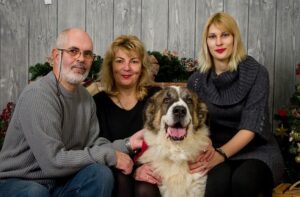
Recognizing the stages your puppy is going through and teaching him with love, patience, and consistency will help him grow into a sociable, well-behaved, and awesome adult companion dog.


